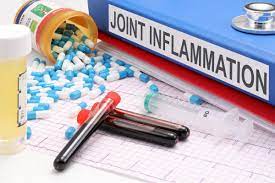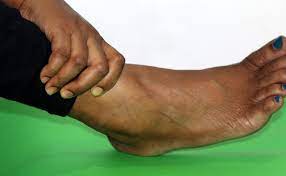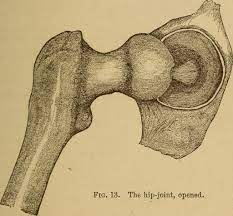Human Growth Hormone Injections Can Improve Joint Recovery After Injury
Hormone Replacement Therapy
HGH Cell Regeneration
Video Link: https://vimeo.com/183148289
Video Download: Human Growth Hormone Joint Rehabilitation Therapy 1
Video Stream: Human Growth Hormone Joint Rehabilitation Therapy 1
Video Link: https://vimeo.com/182763465
Video Download: Human Growth Hormone Joint Rehabilitation Therapy 2
Video Stream: Human Growth Hormone Joint Rehabilitation Therapy 2
Human Growth Hormone Joint Rehabilitation Therapy
HGH has long been understood to have a number of potentially beneficial uses. Human Growth Hormone is used to treat HGH Deficiency in both children and adults, and the hormone has long been used as a means of athletic enhancement, despite the inherent potential risks.
As scientific knowledge about Somatropin continues to grow, new uses for the potent hormone continue to come to the forefront. One of the most promising HGH Uses being researched today is Joint Rehabilitation.
Dr. Dunn Experimental Treatment
One physician in North Miami has been experimenting with Growth Hormone for Injury Rehabilitation for many years. His name is Doctor Allen Dunn. For the last fifteen years, he has utilized Human Growth Hormone Shots to speed up the rate at which his patients heal.
According to Dr. Dunn's clinical findings and a growing body of research regarding the potential healing power of HGH, it seems that Growth Hormone may have a legitimate place in Physical Rehabilitation as a means to improve outcomes with regard to joint injuries.
HGH Joint Treatment Supporting Evidence
This physician provides anecdotal and visual evidence for the success of his treatments, showing before-and-after x-ray photos of consenting patients that have turned to him for therapy. Just by looking at the x-rays, it is clear that there is at least some substantial merit in the experimental medical HGH  procedures that Dr. Dunn has implemented.
procedures that Dr. Dunn has implemented.
Dr. Dunn explains that his Rehabilitation Therapy (which includes HGH HRT) has a success rate of fifty to ninety percent, dependent upon the particular joint in question. Rehabilitation success rates are listed below:
Thumbs: 75%
Shoulders: 75%
Elbows: 95%
Hips: 50%
Knees: 86%
Ankles: 95%
Growth Hormone Joint Therapy Medical Data
Another collection of evidence regarding Dr. Dunn's Experimental HGH Procedure is an aggregation of data regarding qualitatively assessed success rates regarding knee rehabilitation. In this study, therapy is considered successful if the treatment leads to a level of joint space in the knee around four millimeters. In this study, patients were scored under five criteria:
The Functionality of the Knee Joint
Before surgery, over 86% of patients suffered from abnormal to severely abnormal knee function. After treatment, over 87% of patients had knee joints that were of either standard or near-normal functionality.
IKDC Subjective Knee Evaluation
This appraisal method demonstrates the knee function level based on a series of scored questions revolving around pain, movement ability, and other factors. Before treatment, the overall score was 37 out of 100 in terms of functionality. After treatment, the overall average score increased to 78.1, showing vast and significant improvement for the group.
Mobility Scores
In this scale, patients reported that mobility presented either: no problems, some problems, or an inability to walk. Before treatment, over eighty percent reported some mobility issues, while after therapy, over eighty-five percent reported that they had no maneuverability issues.
Daily Activities
Similar to the Mobility Scores Scale, this scale measured patients' ability to go about their normal, everyday activities. Before treatment, almost eighty-two percent of patients experienced at least some issues with performing their ordinary and everyday tasks. After treatment, however, over ninety-two percent of patients had no issue with their ability to perform their routine daily tasks.
Discomfort/Pain
This final scale recorded pain perception among patients before and after knee treatment. Before Joint Rehabilitation featuring HGH, over ninety-eight percent of patients responded that they suffered moderate to severe knee pain (72.7% and 25.8%, respectively).
After Medical Treatment featuring Growth Hormone, over eighty percent of patients no longer experienced knee pain, and only 1.5% still experienced severe knee pain.
HGH Stimulates Hyaline Tissue Generation
In addition to improving the development and function of cartilage, Dr. Dunn has also noted that HGH Treatments stimulate the development of healthier cartilage tissue. Doctor Dunn claims that his treatment leads to cartilage production, which is 100% hyaline cartilage.
 Hyaline cartilage is the natural form of cartilage that usually occurs in the joints. It is firm, slippery, shiny, and nearly translucent. This type of cartilage is perfectly designed for proper and healthy movement of the joints. Most common operations to repair cartilage create a different form of cartilage upon healing, known as fibrocartilage. This type of cartilage is a form of scar tissue.
Hyaline cartilage is the natural form of cartilage that usually occurs in the joints. It is firm, slippery, shiny, and nearly translucent. This type of cartilage is perfectly designed for proper and healthy movement of the joints. Most common operations to repair cartilage create a different form of cartilage upon healing, known as fibrocartilage. This type of cartilage is a form of scar tissue.
Hyaline Cartilage vs. Fibrocartilage
Usually, when hyaline cartilage is severely damaged (severely torn directly to bone tissue), the hyaline cartilage destroyed is replaced by fibrocartilage. This form of cartilage does still protect the bone. Still, the joint is no longer perfectly smooth in texture, and fibrocartilage can grow irregularly upon healing, creating areas of pain and potentially limiting movement.
Human Growth Hormone treatments seem to stimulate the production of Hyaline Cartilage upon healing, producing a more unrestricted range of movement with less potential for recurring pain.
Growth Hormone Joint Therapy Treatment Duration
This form of HGH Joint Therapy generally lasts for three to twelve weeks, dependent upon the location and the severity of the joint issue. Sadly, this form of Human Growth Hormone treatment is not taken care of by insurance, so the treatment must be paid for entirely by the patient. The average cost of HGH for Joint Rehabilitation Therapy is about ten thousand dollars.
Upon studying this medical treatment more thoroughly, it seems to show high levels of potential, although the data set seems far from complete.
From a physiological perspective, it makes perfect sense that joint cartilage could be treated in this manner, increasing the rate of hyaline cartilage production. However, the claim that 100% hyaline cartilage production takes place seems a bit specious.
Growth Hormone Stimulation Can Naturally Go Haywire
HGH is not always good for the joints, however. Patients with a disorder known as gigantism have nearly double the average amount of cartilage in their bones compared with normal humans.
Patients with gigantism have a pituitary disorder that stimulates the extreme production of Human Growth Hormone, which causes their bodies to grow exceptionally large in size while also creating a number of different medical complications throughout their bodies.
Patients with Gigantism also have a seventy percent chance of significant joint issues due to their affliction. Joint complications in these individuals result from joints that are too large for the standard compartment in which the joint lies.
In addition, extreme levels of Human Growth Hormone also often cause joints and bones to grow into abnormal shapes and configurations, increasing the chance of pain and other issues.
Gigantism Patients at a severely enhanced risk of bone disorders show a sweet spot regarding joint cartilage, where the joints function at their best. For this reason, it is essential to be cautious and discuss all potential treatment options with your physician. You want to choose a medical therapy that provides the maximum level of potential benefit to both you and your body.
HGH in Combination with Arthroplasty Shows Most Promise
We feel reasonably confident that further scientific research will show that this treatment can be highly beneficial to at least a critical subset of patients. HGH Joint Treatment will most likely have the most significant benefit for patients undergoing arthroplasty. Human Growth Hormone will help properly sculpt and build the joints in combination with other forms of treatment.
Although the body of medical research is incomplete, Doctor Dunn's research is still quite impressive. The ability of Human Growth Hormone to naturally stimulate the development of healthy hyaline cartilage is a significant breakthrough that will undoubtedly contribute immensely toward a future medical protocol for joint replacement and treatment. It will take some time to flesh out the HGH Joint Treatment's medical process fully.
Large Anecdotal Corroboration Regarding the Benefits of Growth Hormone for Joint Damage
This form of treatment is also widely discussed online on message boards, forums, and various other websites, with many patients and clinical professionals confident in the overall benefits of the procedure. There is also a growing body of scientific evidence that Human Growth Hormone Replacement Therapy can treat and alleviate osteoarthritis, and there is already a lot of evidence that Human Growth Hormone Improves outcomes regarding osteoporosis.
HGH Joint Treatments Produce Few Side-Effects
Research and first-person accounts of treatment show that this form of Human Growth Hormone Therapy produces very few side effects. There are two strategies for this form of therapy. One treatment option involves minor surgery. In this surgery, the joint is exposed, and the surgeon clears the joint of all dead, damaged, or malformed tissue in the joint.
dead, damaged, or malformed tissue in the joint.
After the joint has been cleared of debris in this process known as debridement, Human Growth Hormone Injections are provided in a regular pattern across the treatment window. An essential aspect of this treatment is minimizing load-bearing on the treated joint until HGH Therapy is complete. Other forms of treatment involve the direct injection of Growth Hormone into the afflicted joint without surgery.
Weigh the Costs and Benefits of Growth Hormone Joint Injections to Your Own Individual Case
Although the expense of this treatment is high as a result of it not being covered by insurance, you may wish to utilize this therapy before you undergo total joint replacement, which is a long and laborious process that requires a long period of physical therapy.
Suppose you have the income available and think this treatment might significantly benefit you or a loved one. In that case, we encourage you to discuss the continuing prospects of this medical treatment with a qualified healthcare professional.
- Serostim Bio-identical Hgh Injections [Last Updated On: September 22nd, 2024] [Originally Added On: July 31st, 2020]
- Smart And Simple Tips To Boosting Your Hgh Production [Last Updated On: September 16th, 2024] [Originally Added On: August 1st, 2020]
- Ten Tips For Naturally Enhancing Human Growth Hormone Production [Last Updated On: September 12th, 2024] [Originally Added On: August 4th, 2020]
- How To Safely Inject (HGH) Human Growth Hormone [Last Updated On: July 2nd, 2024] [Originally Added On: August 5th, 2020]
- Can Hgh Injections Help You Manage Your Weight More Effectively? [Last Updated On: September 11th, 2024] [Originally Added On: August 6th, 2020]
- Do Not Buy Hgh Sprays As Scams [Last Updated On: September 10th, 2024] [Originally Added On: August 8th, 2020]
- Can Human Growth Hormone Really Slow Down Aging? [Last Updated On: September 9th, 2024] [Originally Added On: August 9th, 2020]
- The Potential Side Effects Of Human Growth Hormone (HGH) [Last Updated On: February 16th, 2025] [Originally Added On: August 10th, 2020]
- Beware Hgh Scams: Only Use Bio-identical Growth Hormone [Last Updated On: July 23rd, 2024] [Originally Added On: August 13th, 2020]
- Human Growth Hormone Replacement Therapy For Hgh Deficiency [Last Updated On: October 20th, 2024] [Originally Added On: August 14th, 2020]
- How Does The Human Body Produce Human Growth Hormone? [Last Updated On: August 15th, 2024] [Originally Added On: August 17th, 2020]
- Do Not Buy Hgh Pills As Scams [Last Updated On: August 14th, 2024] [Originally Added On: August 18th, 2020]
- Hgh Injections From Mexico Are Dangerous And Illegal [Last Updated On: February 14th, 2025] [Originally Added On: August 19th, 2020]
- Human Growth Hormone Menopause Treatment [Last Updated On: February 20th, 2025] [Originally Added On: August 20th, 2020]
- Hormone Replacement Therapy Protects The Minds Of Hgh Deficient Patients [Last Updated On: August 12th, 2024] [Originally Added On: August 21st, 2020]
- Hgh Illegal Or Legal [Last Updated On: August 17th, 2024] [Originally Added On: August 22nd, 2020]
- How To Inject Hgh And Testosterone Safely And Easily [Last Updated On: August 13th, 2024] [Originally Added On: August 23rd, 2020]
- Human Growth Hormone Medical Research [Last Updated On: February 17th, 2025] [Originally Added On: August 24th, 2020]
- The Healing Properties Of Human Growth Hormone [Last Updated On: August 11th, 2024] [Originally Added On: August 25th, 2020]
- Hgh Therapy For Woman [Last Updated On: February 12th, 2025] [Originally Added On: August 26th, 2020]
- Hgh Therapy For Men [Last Updated On: July 20th, 2024] [Originally Added On: August 27th, 2020]
- How Does Age-related Hgh Decline Impact Health? [Last Updated On: February 17th, 2025] [Originally Added On: August 29th, 2020]
- The Anabolic And Bodybuilding Effects Of Bio-identical Hgh Injections [Last Updated On: August 9th, 2024] [Originally Added On: August 31st, 2020]
- Does Human Growth Hormone Really Have Healing Power? [Last Updated On: August 7th, 2024] [Originally Added On: September 1st, 2020]
- Getting HGH Growth Hormone Online [Last Updated On: August 8th, 2024] [Originally Added On: September 3rd, 2020]
- Buying Hgh [Last Updated On: September 4th, 2024] [Originally Added On: September 5th, 2020]
- Increase Your Potential With Hgh! [Last Updated On: September 3rd, 2024] [Originally Added On: September 6th, 2020]
- Can Bio-identical Hgh Help You Live The Life You Want? [Last Updated On: February 17th, 2025] [Originally Added On: September 8th, 2020]
- How Hgh Improves Libido [Last Updated On: February 17th, 2025] [Originally Added On: September 9th, 2020]
- Can Human Growth Hormone Speed Up Physical Rehabilitation [Last Updated On: October 27th, 2024] [Originally Added On: March 14th, 2021]
- A Beginner's Guide To Human Growth Hormone Replacement Therapy [Last Updated On: February 19th, 2025] [Originally Added On: March 16th, 2021]
- Can Hgh Injections Help You Live A Healthier And Happier Life? [Last Updated On: October 26th, 2024] [Originally Added On: March 19th, 2021]
- Buy Hgh Injections For An Introduction To Growth Hormone Therapy [Last Updated On: November 12th, 2022] [Originally Added On: March 20th, 2021]
- Improve Sexual Performance With Hgh Injections [Last Updated On: February 14th, 2025] [Originally Added On: May 12th, 2022]
- Understand The Risks Of Human Growth Hormone Overdose And Abuse [Last Updated On: November 24th, 2024] [Originally Added On: May 24th, 2022]
- Racing Ferraris – A Stressful Way to Earn a Living [Last Updated On: March 19th, 2025] [Originally Added On: July 12th, 2022]
- HGH: The Happiness Hormone [Last Updated On: March 26th, 2025] [Originally Added On: August 15th, 2022]
- Government, Contractor, and NGO Productivity, Efficiency, and HGH [Last Updated On: February 24th, 2025] [Originally Added On: September 7th, 2022]
- Without HGH, You Might as Well Be Dead [Last Updated On: March 11th, 2025] [Originally Added On: September 16th, 2022]
- Study Suggests Women Can Sniff Out Single Men [Last Updated On: July 24th, 2024] [Originally Added On: February 17th, 2023]
- Geographic Distribution of HGH Deficiency [Last Updated On: August 3rd, 2024] [Originally Added On: July 13th, 2023]
- Sudden Onset of HGH Deficiency [Last Updated On: October 17th, 2024] [Originally Added On: September 22nd, 2023]
- The Emotional and Mental Health Effects of HGH Deficiency [Last Updated On: October 15th, 2024] [Originally Added On: September 28th, 2023]
- Understanding Hormone Replacement Therapy for Menopause [Last Updated On: February 6th, 2025] [Originally Added On: February 6th, 2025]
- Unveiling the Magic of Human Growth Hormone: A Colorful Spectrum in Medical Marvels [Last Updated On: February 16th, 2025] [Originally Added On: February 13th, 2025]
- Introduction: The Demand for Health-focused Care in Professional Environments [Last Updated On: February 15th, 2025] [Originally Added On: February 15th, 2025]
Word Count: 1573







